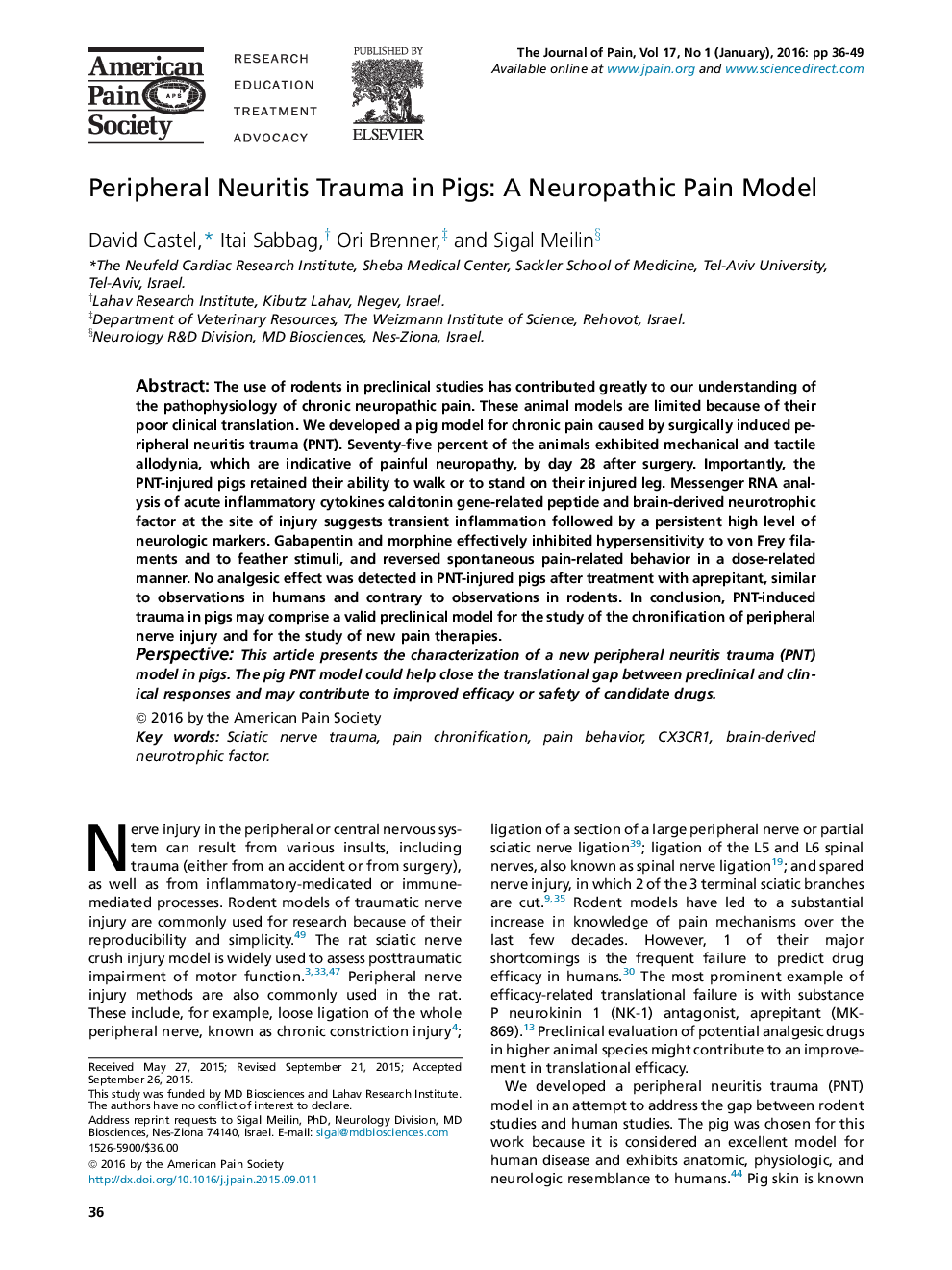| Article ID | Journal | Published Year | Pages | File Type |
|---|---|---|---|---|
| 2722871 | The Journal of Pain | 2016 | 14 Pages |
•PNT in pigs caused sensitivity to mechanical stimulation and mechanical allodynia.•PNT in pigs caused behavior changes but minor to non-existent motor dysfunction.•All behavior parameters were altered after treatment with gabapentin or morphine. Aprepitant failed to relieve any of the pain-related symptoms.•mRNA analysis of the site of injury indicates an inflammation phase followed by a neurogenic phase.•Spinal cord mRNA analysis shows an increase in a microglia marker and a later increase in BDNF.
The use of rodents in preclinical studies has contributed greatly to our understanding of the pathophysiology of chronic neuropathic pain. These animal models are limited because of their poor clinical translation. We developed a pig model for chronic pain caused by surgically induced peripheral neuritis trauma (PNT). Seventy-five percent of the animals exhibited mechanical and tactile allodynia, which are indicative of painful neuropathy, by day 28 after surgery. Importantly, the PNT-injured pigs retained their ability to walk or to stand on their injured leg. Messenger RNA analysis of acute inflammatory cytokines calcitonin gene-related peptide and brain-derived neurotrophic factor at the site of injury suggests transient inflammation followed by a persistent high level of neurologic markers. Gabapentin and morphine effectively inhibited hypersensitivity to von Frey filaments and to feather stimuli, and reversed spontaneous pain-related behavior in a dose-related manner. No analgesic effect was detected in PNT-injured pigs after treatment with aprepitant, similar to observations in humans and contrary to observations in rodents. In conclusion, PNT-induced trauma in pigs may comprise a valid preclinical model for the study of the chronification of peripheral nerve injury and for the study of new pain therapies.PerspectiveThis article presents the characterization of a new peripheral neuritis trauma (PNT) model in pigs. The pig PNT model could help close the translational gap between preclinical and clinical responses and may contribute to improved efficacy or safety of candidate drugs.
